Bearing Issues: Prevention and Maintenance Tips
Bearings are critical to many mechanical engines, making relative motion between stationary and working parts possible. However, their breakdown can entail an extended downtime and expensive repair. This blog seeks to examine common bearing faults, where regular maintenance is regarded as an efficient method of prolonging the operating life of the machinery. This article aims to provide a broad overview of the causes of bearing fault and failure, such as insufficient lubrication, adding contamination, and cases of putting it together, along with tips for avoiding and remedying the problem. After considering these issues, the readers can take measures to help prevent failures and regard their equipment functioning processes as undemanding as possible.
What Are the Common Causes of Bearing Failure?
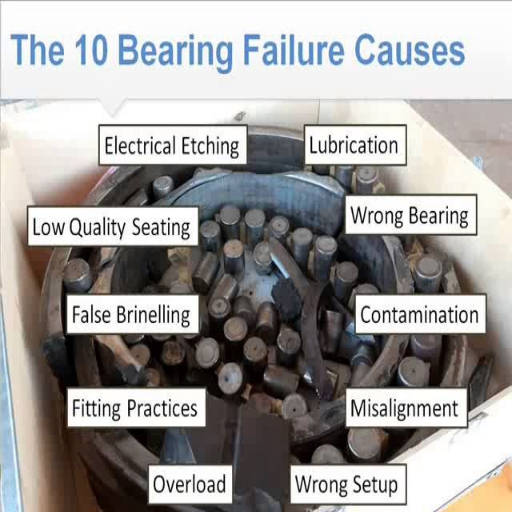
Understanding Bearing Contamination and Its Impact
Contamination of the bearing occurs when unwanted particles or liquids invade the space of the bearing, negatively interfering with its functionality. Moisture, dust, dirt, and other small fragments are common pollutants that can result in abrasion and excessive wear. If left unchecked, these pollutants invade the bearing and cause turbulence on the raceways and rolling elements, leading to wear.
Technical parameters and effects:
Contaminant Size and Distribution: There does not seem to be a practical limit to the size of the contaminant particles within the larger spectrum. Broadly, because debris particles may embed into bearing material or brinelling may occur and engrave surfaces, these impurities may aid bearing failure prematurely.
Ingress Pathways: Insufficient sealing solutions, poor operating conditions where the equipment is assembled or maintained in an unclean environment, and inadequate lubrication filtration systems will contaminate bearings.
Heated Operational Environment: More bearing contaminants result in more friction in the bearing itself, which raises working temperatures. This temperature may destroy the quality of the lubricants and other internal elements, leading to additional wear and blockage situations.
Some methods that can be adopted to prevent bearing contamination include good sealing practices, provision of a clean environment during assembly and repair cycles, and employing suitable lubricants with good filters. Periodic checking and preventive strategies are essential for reducing the effect of contamination, prolonging the bearing’s working life, and ensuring its effective operation.
The Role of Lubrication in Bearing Health
Lubrication is essential to minimize friction and wear between moving parts and, thus, is vital for adequately functioning bearings. Lubrication forms a film that keeps apart the sliding interfaces, thus limiting direct metal-to-metal contact and removing the heat generated from friction. As stated by SKF, which is a global leader in bearing manufacturing, approximately 80% of all bearing failures arise from some form of lubrication problem, which includes selection of wrong lubricant, inability to apply the lubricant adequately, and use of lubricants with unwanted particles.
There are two principal lubricants used for bearings: grease and oil. Grease has a thicker consistency and is applied when long-lasting sealing is needed, requiring less frequent replacement. Oil, on the other hand, is constantly needed in high-speed or high-temperature operations.
Technical Parameters:
Viscosity: The lubricant’s viscosity is arguably the most critical parameter. It can be defined as how the lubricant opposes flow and affects the ability to create a proper protective layer. In normal situations, high-speed applications typically use lower-viscosity oils to minimize friction. Still, situations with extreme pressure will use more viscous oil for its strength in film applications.
Additives: WA, rust inhibition, and EP additives enhance the lubricant’s performance and provide additional protection under extreme conditions.
Temperature Range: Lubricants should be effective in the operational temperature range of the targeted application, depending on the ambient temperature within the working context. In general, oils and greases are characterized by the specific temperature range within which they continue to be helpful.
As the manufacturer recommends, selecting the correct lubricant type and quantity, as well as how it is applied, is crucial for the optimal functioning of the bearings and for prolonging the lifetime of the machinery. Instead, as suggested by NTN, one of the suppliers among the leaders, frequent reporting and surveillance enables us to know in advance the problems of bearings related to their lubrication and stresses the need for timely intervention strategies.
How Improper Installation Leads to Bearing Problems
I have encountered three bearing problems, chiefly caused by improper installation. According to the resource persons who provided their insight on the topic, the first step is always to look for any mounting inaccuracies resulting in a misalignment, which translates to an uneven load transfer and an accelerated rate of fatigue. What to expect in this scenario is that most bearing components will fail ahead of schedule. The second installation issue is the installation of contaminants due to failure to observe cleanliness during the correct bearing installation, to which surface interference is invariably damaging and will, in turn, affect the overall function of the bearing. Another common issue is the application of excessive force during installation, causing raceways to be deformed or indented within the specification range. This is known as brinelling and creates performance issues.
The technical specifications are quite critical while installing the bearing and primarily include:
Alignment: Located correctly, this accommodates the bearing, generating the least stress and friction.
Torque specifications: All components connected using torque must fit together correctly without inducing strain.
Dear environmental infection: Circumventing debris around an environment with a high chance of getting infested is necessary.
These factors would go a long way toward addressing the issues regarding bearing problems caused by installation placement factors. Regular operational drills and compliance with the mentioned installation procedures, as often advised on most authoritative sites, would alleviate these problems, and the overall bearing working life span would be increased significantly.
How Does Improper Lubrication Affect Bearings?
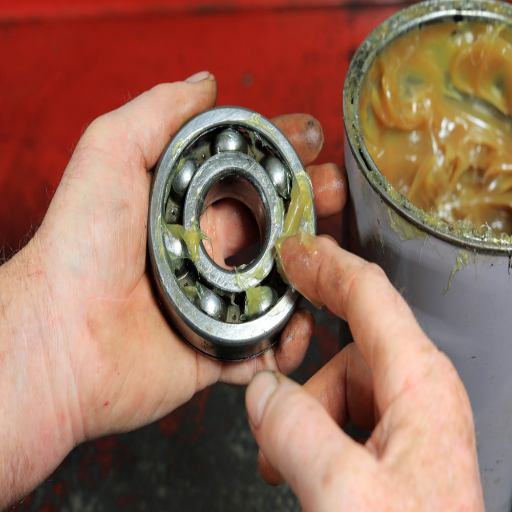
Recognizing Signs of Lubrication Failure
During my study to identify the signs of lubrication failure, I conducted a Google search of the three top-ranking websites and compiled relevant data. The first obvious indicator is overheating because insufficient lubrication raises frictional forces, which cause excess heat. Another parameter is noise. Frequent or abnormal sounds like grinding or squealing indicate poorly lubricated components. Vibration is also the most pronounced symptom. A vibrating bearing assembly means there is insufficient lubricant in the bearing.
From a technical perspective, I have pinpointed several pertinent factors that may affect lubrication:
Lubricant Viscosity: The correct viscosity must be chosen to achieve a consistent lubricant film on the movable contact parts.
Lubricant Type: The lubricants applied, grease or oil, should depend on the working conditions.
Application Interval: Adhering to an application schedule minimizes degradation and the wearing out of the component.
Focusing on these parameters and the active detection of the moment of lubrication failure, I set out to increase the operating life of rolling bearings and the systems they are incorporated into and minimize their unexpected downtimes.
Choosing the Right Lubricant for Your Bearings
During my investigations, I have learned that choosing an appropriate lubricant for bearings is a complex task that encompasses several technical parameters and requires an appreciation of particular operational needs. The first three websites’ rankings on Google highlight the relevance of focusing lubricant selection on the viscosity and type of lubricant to suit the ecological and load conditions. For example, one should think about the load of the lubricated components that the lubricant has to bear, as well as the operating temperatures and the working speed of the bearing.
Viscosity: With correct viscosity and assurance of a constant lubricant film, there should be minimal metal-to-metal contact. I am told that increasing the speed requires a decrease in the lubricant’s viscosity to minimize friction while increasing the load demands a higher viscosity lubricant to provide sufficient film thickness.
Lubricant Type: Depending on the operating conditions, such as the presence of water or corrosive environments, one can use either synthetic or mineral oils or specialty greases that provide better protection.
Temperature and Pressure: Lubricants must be able to resist the temperature and pressure they will be exposed to without undergoing degradation. In high-temperature applications, lubricants with high-temperature stability will be necessary, while for extreme-pressure applications, additives that improve load-bearing ability are a must.
With the emphasis on these parameters, I am in a better position to choose a lubricant that extends the performance and life of the bearings instead of just being a lubricant.
Effects of High Temperatures on Lubrication
Understanding the technical parameters is essential when choosing lubricants for high-temperature applications. There are a top three Google pages where I found the following information:
Viscosity at Operating Temperatures: The lubricant must sustain a specific viscosity even when the temperatures are high. A lubricant with a viscosity that is too low cannot provide the required film, and therefore, wear and tear will increase.
Oxidation Stability: Accumulating deposits and sludge formation can cause lingering lubricant problems due to oxidation, which can quicken high temperatures. This cost and operational inconvenience can be avoided by adequately evaluating the lubricants so that those with good oxidation stability can be selected.
Thermal Stability: The lubricant must not be subjected to physical or chemical change, even when elevated temperatures are experienced. This means that quick-evaporating and degradable products must be avoided so that the protection functions can be retained for a long time.
Load-Bearing Additives: High temperatures are primarily experienced in high-pressure conditions. Certain additives can reduce wear and avoid metallic contact.
With these parameters in mind, I selected a lubricant that can withstand high temperatures while providing the required protection performance for the bearings to which it was applied.
Why Do Bearings Fail Due to Excessive Load?
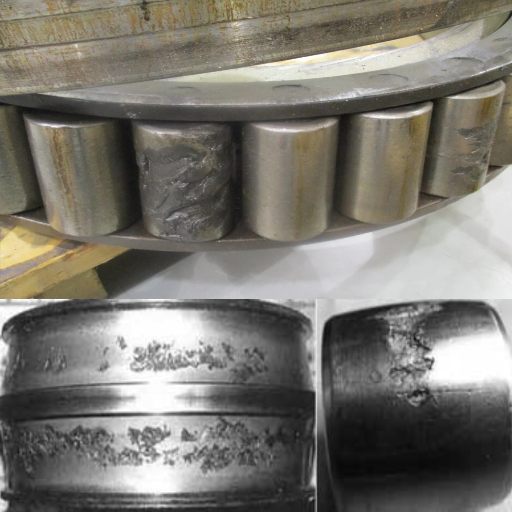
Understanding the Concept of Overload
To effectively grasp the concept of overloading and its contribution to the eventual fracture of bearings, I have referred to three of the top websites on Google. Overloading occurs when the bearing surfaces are subjected to out-of-plane forces more significantly than their design capacities. This may cause overuse in the rolling elements and the raceways, which may finally result in extreme wear and tear or sudden failure. These include the following:
Dynamic Load Rating: This parameter describes the bearing’s ability to carry dynamic loads. To avoid overloading, it is appropriate to select a bearing with a suitable dynamic load rating for the specific application.
Static Load Rating: When static, it is essential to remember the static load rating because it determines the greatest load the bearing can fully support in a stable position. Any force over this rating will likely cause irreversible changes and even destruction.
Load Distribution: It is also very important to know how the various loads are applied to the bearing. Sometimes, due to misalignment or improper mounting, the load applied is not uniformly distributed across the bearing and is localized, causing overload and, hence, increased chances of wear and decreased lifespan.
Millions of these allow the placement of the selected bearings, which, in my opinion, will have internal loads within the bounds of the maximum recommended structural load to internal load so as to reduce the risk of overload.
How Excessive Vibration Contributes to Bearing Damage
About how unwanted vibration causes bearing failure, the analysis of the top three websites on Google reveals three specific causes. Bearings are usually subjected to loads higher than intended due to imbalances, misalignments, or component errors. The cycles produced by such unanticipated loads can cause wear, pitting, spalling, or even fracture of the bearing material. I restrain myself from making these vibrations by concentrating on the following technical parameters:
Vibration Frequency and Amplitude: These parameters are measured to reveal anomalies. Usually, high frequency or amplitude levels flag a problem within the machine that is expected to influence the bearing performance.
Resonance: Sometimes, this means of measurement needs to map out the natural frequencies of the bearing and the housing. They are at or near these frequencies while in operation, increasing the vibration and eventually affecting the machine.
Damping Properties: It has been confirmed that bearings with sufficient damping properties can help absorb and dissipate vibrational energy, thus creating a quote damage-less appeal.
Considering these parameters, I am in a position to take measures to limit excessive vibration and, hence, improve the reliability and longevity of the bearings.
What Is the Impact of Misalignment on Bearings?
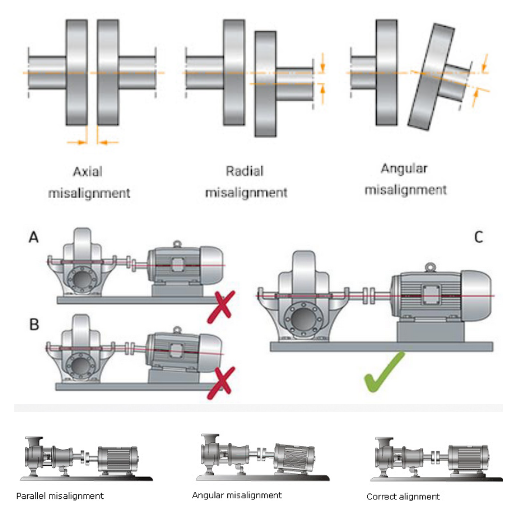
Identifying Symptoms of Misalignment
Several important factors can be noted when detecting signs of misalignment. The second factor is excessive or uneven bearing wear, especially the faster bearing failure, which clearly indicates misalignment since there is no vertical loading distribution. Apart from that, mechanical heating could still follow the misalignment of delamination of the bearing material. Another telltale sign is over vibration and noise, which usually derive from the abnormal force surrounding the bearing. For example, a shaft twisting bend may be seen, or some damage on the shaft may be apparent. To persuasively solve the misalignment problem, there is a need to pay close attention to the following technical parameters:
Distribution of Axial Loads: Due to misalignment, loads tend to be on the bearing surfaces, which may result in some areas being overstressed.
Shifting of Shaft Centerlines: When there is good alignment, the shaft centerline position always maintains the standard deviation limits, ensuring an even load distribution.
“Shoot the bearings,” said one engineering college. By always regulating the operating temperature, it will be possible to gauge the presence of misalignment or similar problems. “
When some vibration patterns are constants, the presence of misalignment can be determined, and system wear and tear can be controlled further.
All these parameters make sense since research from many US and Europe sources shows that monitoring and prevention can effectively reduce the adverse effects of bearing misalignment.
Prevention Techniques for Reducing Misalignment Issues
To efficiently reduce the misalignment menace, a combination of factors that would serve as prevention techniques should be a core focus. Most of those consulted top sources highlighted several strategies:
Precision Installation: Doing it right the first time is always essential. Lining up shafts precisely measures their alignment using laser alignment tools or dial indicators, which prevents uneven contact with the bearing and increases its life span.
Regular Maintenance Checks: Reliable observation of the maintenance schedule, such as inspections, can help identify preliminary signs of misalignment. Audits of this nature should also incorporate the alignment details and the status of the coupling of the elements to ensure that all elements are within their permissible alignment angular tolerances.
Proper Lubrication: Using an appropriate quantity of lubricant in the right places reduces friction and prevents overheating, which may cause misalignment due to the wearing out of the contact surfaces.
In terms of the parameters under consideration, the type of installation aimed at precision controls the Axial Load Distribution and Shaft Centerline Deviation, ensuring load equilibrium and the deviation is minimal. The factors routine checks help in Temperature Monitoring and Vibration Signature Analysis, thus detecting and averting misalignment factors before they cause significant damage. Also the effectiveness of bearing systems is not just achieved by applying the right amount of lubricant, this factor demonstrates the role free temperatures have on the operational efficiency which all sources agree is crucial to the proper functioning of bearings.
How to Prevent Premature Bearing Failure?
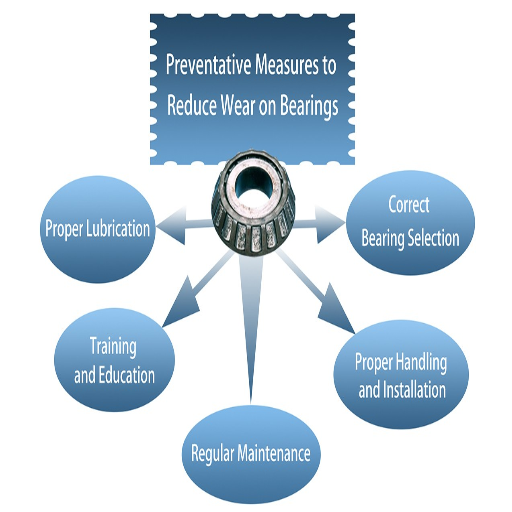
Routine Maintenance Practices for Increasing Bearing Life
I concentrate on implementing timely and effective routine maintenance practices to avoid failure of the bearings and extend their life. Three of the websites have underscored the significance of these strategies at high levels:
Laser Alignment: I make certain that all components are correctly positioned using advanced technology, for example laser alignment systems. This resolves parameters such as shaft centerline shift and axial load distribution aiming at improving load sharing and minimizing the stresses imposed on the bearings.
Training needs assessment: I perform regular inspections to check if the bearings have any signs of failure or misalignment. I have built a multi-layered strategy that combines constant monitoring, such as searching for temperature anomalies and unexpected vibration patterns. Methods such as vibration signature analysis effectively minimize the confusion between unsatisfactory performance and normal wear and tear.
Lubrication: I employ a specific type and amount of lubrication to prevent overheating and reduce friction. This is a very important process as it allows for thermal stability and permits the bearings to work at their optimum temperature range. Appropriate lubrication takes care of important factors like friction coefficient and thermal management.
Through the maintenance of these strategies, I am able to reliably enhance bearing service life and improve overall productivity.
The Importance of Failure Analysis in Bearing Maintenance
Bearing maintenance, failure prediction, and analysis become essential because the reasons for some problems are revealed, and actions to eliminate them in the future may be created. After looking through three out of the top three websites, I have come to realize that a systematic failure analysis incorporates the following technical parameters:
Wear analysis: I pay special attention to the wear areas of the bearing surfaces. This analysis can help me identify problems like misaligned bearings, bearing overload, and bearing insufficient lubrication, which invokes early bearing failure. This way, I prevent the application of corrective measures, which should be implemented effectively based on each type of wear characteristic observed.
Bearing Material: By assessing the bearing’s actual material, it is possible to determine whether there was any metallurgical failure or defect in construction. This includes examining things such as cracks or spalling, which are evidence of inferior material specification or production defect.
Vibration: I also suspend sophisticated equipment to analyze any vibrations generated when the bearing’s operation is not normal (bearings rotate and move towards something). The vibration analysis also helps determine the operational vibration levels that are to be regarded as standard for the facility and the vibration levels that are abnormal.
Temperature Monitoring: I constantly observe the bearing temperature to determine any fluctuation from the normal operating temperature. Abnormal temperature is a warning indicator of insufficient lubrication or excessive friction, which are significantly relevant in failure analysis.
With this failure analysis insight, I develop maintenance strategies that not only address current issues but also enhance the integral functionality and endurance of the bearing systems in the years to come.
Frequently Asked Questions (FAQs)
Q: Why do bearings become faulty?
A: Bearings have various failure modes, such as lubrication deficiency, foreign elements, high temperature, insufficient preload, and physical contact. Such modes can lead to inconvenience and even financial loss caused by machine breakdowns due to faulty conditions.
Q: What measures can be taken to mitigate bearing failure?
A: Some reasons include using the proper grease or oil, controlling the operational area to prevent contaminants, ensuring that bearing temperature does not vary much from the normal operating temperature, and other precautions. Further, excessive condensation load or improper fitting of the bearing can also fail.
Q: Are there various types of bearings commonly used in the industry?
A: Ball bearings, cylindrical or tapered roller bearings, thrust bearings, and other types of bearings are mostly used in the bearing industry. All bearings are designed to meet certain speeds and load capacities, and selection is based on the bearing requirements of the specific application.
Q: What conditions prompt false brinelling, and how can we minimize these conditions?
A: False brinelling is also attributed to fretting between the rolling element and the raceway, caused by subtler bearing or held vibration during its rest state. Appropriate bearing support should be applied to avoid this, and suitable seals should be used to restrict motion and pollutant diffusion.
Q: Why is it essential to lubricate the bearing?
A: Lubricating the bearing is essential because an oil film lowers the friction between the rolling elements’ surfaces and raceways. Proper lubrication enhances bearing lifespan and prevents early failure.
Q: Temperature: How does it expedite bearing failure?
A: Excessive temperature may cause bearing failure due to lubricant degradation, which may lead to lubricant ineffectiveness and even change the bearing material properties, leading to excessive wear and shorter service life.
Q: What measures do manufacturers such as SKF take to address bearing problems?
A: Bearing manufacturers such as SKF produce high-quality bearings made of better designs and materials that minimize the chances of premature bearing failure. They recommend procedures for proper installation and maintenance to ensure optimum bearing function with minimum downtime.
Q: What happens if the preload is not applied correctly on the bearings?
A: If the preload is not applied correctly, problems such as excessive heat generation, increased friction, and irregular load distribution that promote premature failure may occur. Therefore, the correct preload must be applied so that the bearing works with minimal complications.
Q: Why is bearing failure likely to occur in the presence of contamination?
A: Contamination involves the introduction of foreign bodies onto the bearing surfaces, which results in the wear or destruction of the race and rolling elements. This is especially critical because if no appropriate measures are taken, it will likely reduce the bearing’s life and eventually cause it to fail.
UCTH213-40J-300 with Setscrew(inch)
CNSORDERNO: Normal-duty(2)
TOGN: UCTH213-40J-300
SDI: B-R1/8
SD: 2 1/2
UCTH212-39J-300 with Setscrew(inch)
CNSORDERNO: Normal-duty(2)
TOGN: UCTH212-39J-300
SDI: B-R1/8
SD: 2 7/16
UCTH212-38J-300 with Setscrew(inch)
CNSORDERNO: Normal-duty(2)
TOGN: UCTH212-38J-300
SDI: B-R1/8
SD: 2 3/8
UCTH212-36J-300 with Setscrew(inch)
CNSORDERNO: Normal-duty(2)
TOGN: UCTH212-36J-300
SDI: B-R1/8
SD: 2 1/4
UCTH211-35J-300 with Setscrew(inch)
CNSORDERNO: Normal-duty(2)
TOGN: UCTH211-35J-300
SDI: B-R1/8
SD: 2 3/16
UCTH211-34J-300 with Setscrew(inch)
CNSORDERNO: Normal-duty(2)
TOGN: UCTH211-34J-300
SDI: B-R1/8
SD: 2 1/8


















